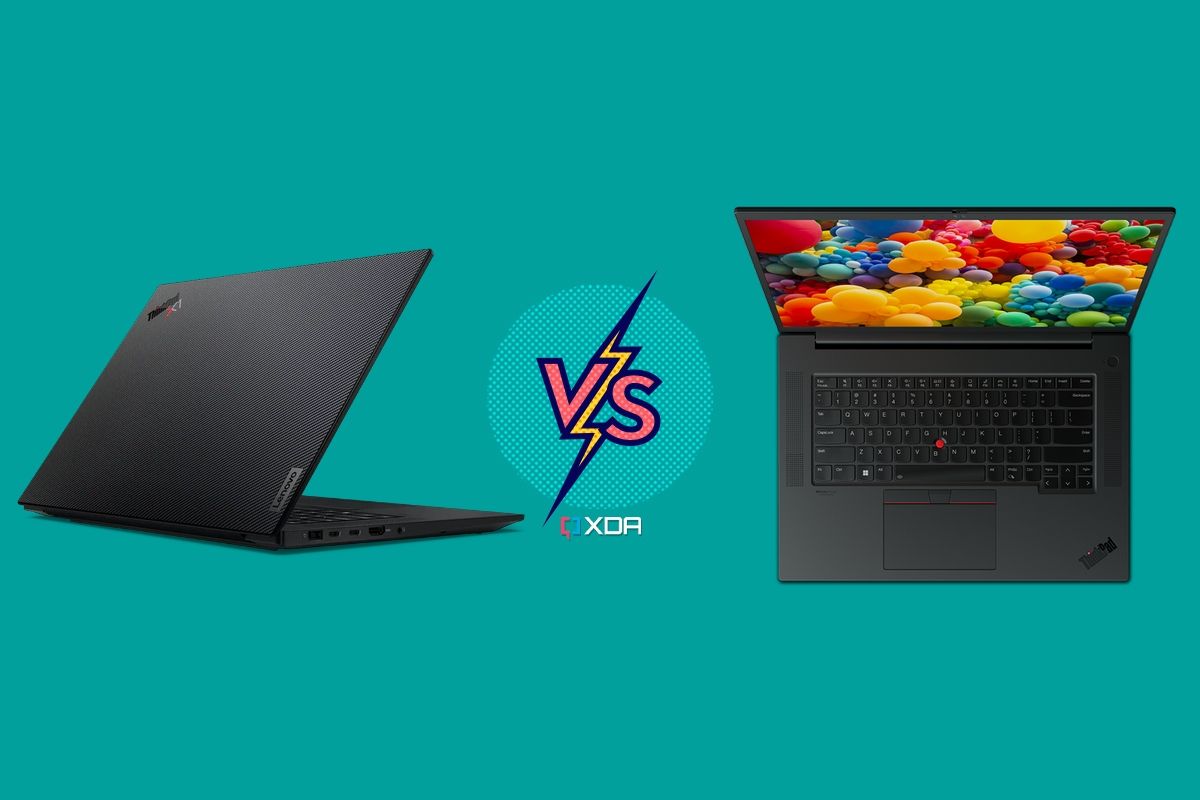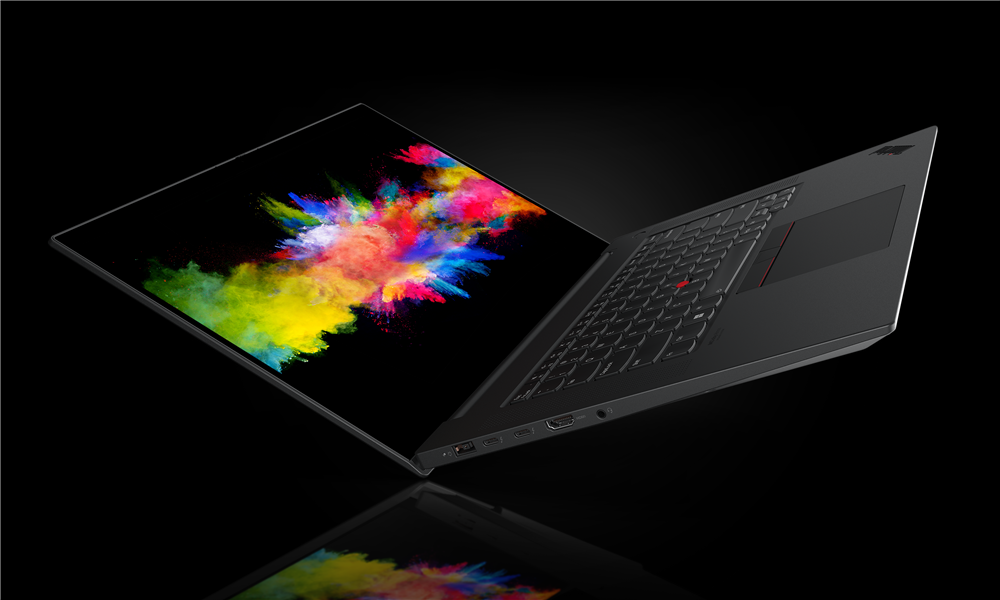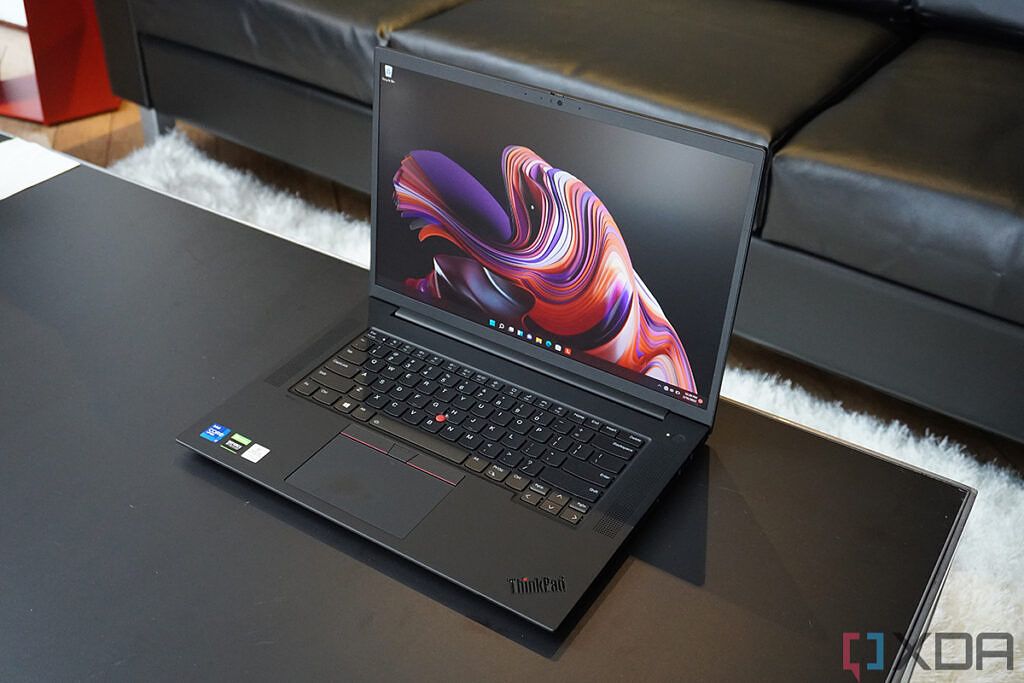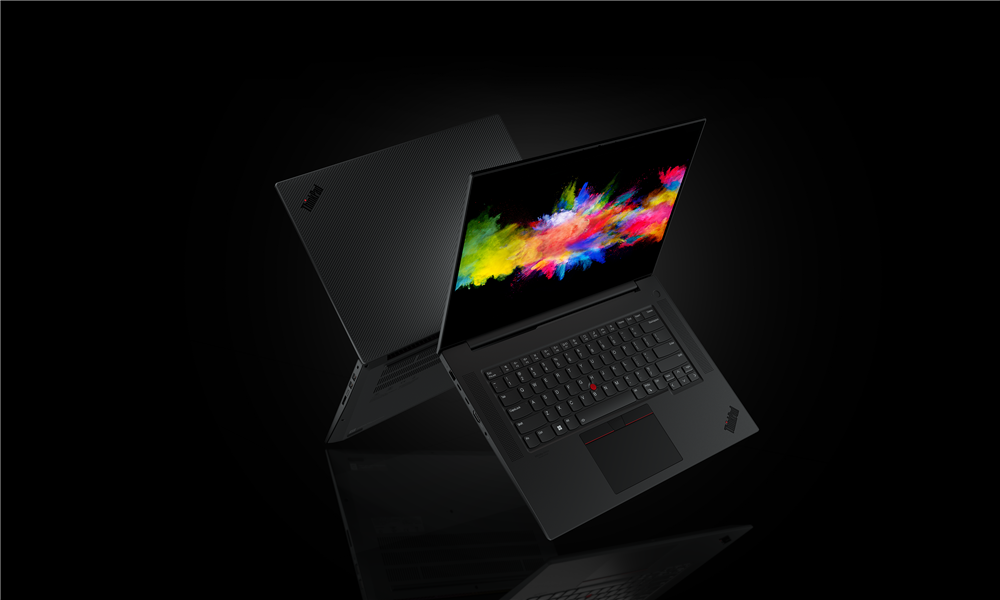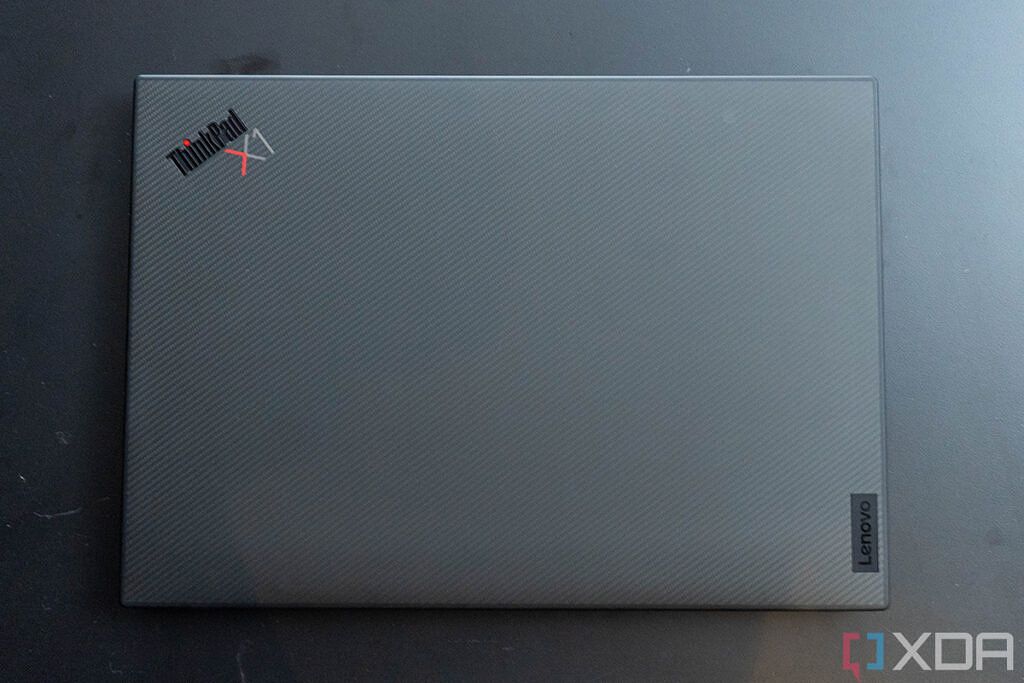Lenovo makes a lot of great laptops, particularly business laptops under the ThinkPad brand. But even while that brand is specifically focused on businesses, there are still a wide range of devices that are part of it, from thin and light laptops to full-blown workstations. And if you want something more powerful there are still quite a few options, such as the Lenovo ThinkPad X1 Extreme Gen 5 and the ThinkPad P1 Gen 5. If you find yourself deciding between these two, we're here to help.
First, it's worth clarifying that these laptops are very similar. So much so that Lenovo provides a single hardware maintenance manual for both devices. So, the differences are very minor in terms of design and even the specs. Still, let's take a closer look.
Navigate this article:
Lenovo ThinkPad X1 Extreme Gen 5 vs ThinkPad P1 Gen 5: Specs
|
Lenovo ThinkPad X1 Extreme Gen 5 |
Lenovo ThinkPad P1 Gen 5 |
|
|---|---|---|
|
Operating system |
|
|
|
CPU |
|
|
|
Graphics |
|
|
|
Display |
|
|
|
Storage |
|
|
|
RAM |
|
|
|
Battery |
|
|
|
Ports |
|
|
|
Audio |
|
|
|
Camera |
|
|
|
Windows Hello |
|
|
|
Connectivity |
|
|
|
Color |
|
|
|
Size (WxDxH) |
359.5 × 253.8 × 17.9 mm (15.57 × 10 × 0.7 inches) |
Non-touch: 359.5 x 253.8 x 17.7 mm (14.15 x 9.99 x 0.7 inches)Touch: 359.5 x 253.8 x 18.2 mm (14.15 x 9.99 x 0.72 inches) |
|
Weight |
Starts at 1.88kg (4.14 lb) |
Non-touch: Starts at 1.81kg (3.99 lbs)Touch: Starts at 1.86kg (4.1lbs) |
|
Price |
Starting at $1,751.40 (varies) |
Starting at $2,059 (varies) |
Performance: Professional or GeForce GPUs
As you could probably have gleaned from the spec sheet above, the Lenovo ThinkPad X1 Extreme Gen 5 and the ThinkPad P1 Gen 5 are pretty much identical as far as performance goes. They have the same Intel processor options available, though there are some differences worth pointing out.
Since the Lenovo ThinkPad P1 is a true workstation, it actually comes with Nvidia's professional GPUs, up to an Nvidia RTX A5500. You can still get it with high-end GeForce cards, but most of the spectrum includes professional RTX cards. In terms of raw performance, Nvidia GeForce GPUs and professional GPUs aren't different - for example, the Nvidia RTX A5500 and the GeForce RTX 3080 Ti are based on the same GPU.
Some professional GPUs include ECC memory.
However, the workstation GPUs are more optimized for business workloads like computing, artificial intelligence, and other kinds of rendering. Some professional GPUs also include error-correcting code (ECC) memory, which can help prevent crashes and other issues during important workloads - at the expense of some performance. GeForce cards are more optimized for gaming, so you may get a better experience with them if you want to play some games on the side.
Another difference worth noting is that, at writing time, you can't configure the ThinkPad X1 Extreme without discrete Nvidia graphics, while the ThinkPad P1 does give you the option to just get Intel Iris Xe in some configurations. What that means is that you can get a more CPU-focused machine that uses less power if you go with the ThinkPad P1, and it actually comes with a smaller 135W charger as a result.
For RAM and storage, the two laptops are once again the same. Both come with up to 64GB of RAM and in similar configurations across the board, along with up to 8TB of SSD storage across two M.2 slots. They also share the same limitation where, if you use the two M.2 slots, you can't get the more powerful discrete GPUs. With the ThinkPad X1 Extreme, you'll be limited to a GeForce RTX 3050 Ti, and with the ThinkPad P1, you'll max out with an Nvidia RTX A2000.
Display and design
The rest of the differences are even more minimal between the two laptops. Both of them offer the exact same display options - a 16-inch panel with a 16:10 aspect ratio, coming in either Full HD+, Quad HD+, or Ultra HD+ resolution. There's nothing different on that front, or in the audio system.
There is one small difference in the webcam configurations, though. The Lenovo ThinkPad X1 Extreme Gen 5 always includes a Full HD webcam with IR for Windows Hello support, while the ThinkPad P1 gives you the option to opt out of the IR camera.
In terms of design, too, the laptops are nearly identical. Aside from minuscule differences in thickness and weight, the two laptops are the same in terms of dimensions. If you want to be nitpicky, there is one tiny visual difference on the lid. The ThinkPad X1 Extreme has a logo that reads "ThinkPad X1", while the ThinkPad P1 only says "ThinkPad", so it's a little cleaner. Otherwise, the color and materials are the same, and both even come with a carbon fiber weave pattern on the lid if you choose one of the Ultra HD+ display options.
Finally, in terms of the ports, these are once again the same laptop. Two Thunderbolt 4 ports, two USB Type-A, HDMI, a headphone jack, an SD card reader, and an optional nano-SIM slot is what you'll find in both. The only difference is that if you choose the ThinkPad P1 without discrete graphics, the HDMI port only supports HDMI 2.0 (4K at 60Hz), while the models with discrete graphics support HDMI 2.1. Both laptops also support NFC, though the ThinkPad P1 gives you the option to remove it. Cellular connectivity support (5G) is also optional on both.
Price and final thoughts
The biggest difference here at the end of the day is really in pricing. The Lenovo ThinkPad X1 Extreme starts at a significantly lower price than the ThinkPad P1, so it might be the obvious choice for many considering the two laptops are so similar.
The only major difference here has to do with the GPUs, and that may or may not change your opinion. ECC memory is a feature that's often found in high-end workstations, and it's basically it provides a layer of protection against errors, which could otherwise result in crashes. In a business environment, reliability is extremely important, so the extra cost may be justified in the long run. Though it's worth mentioning that only the GPU memory supports ECC, not the system memory in general.
Otherwise, these laptops really are the same, and if you don't think you need ECC, you probably don't. You're better off saving some money by going with the ThinkPad X1 Extreme Gen 5. Whichever way you go, you can buy both of these laptops in the links below. If neither of them is your jam, maybe check out the best Lenovo laptops to see some more consumer-oriented devices.
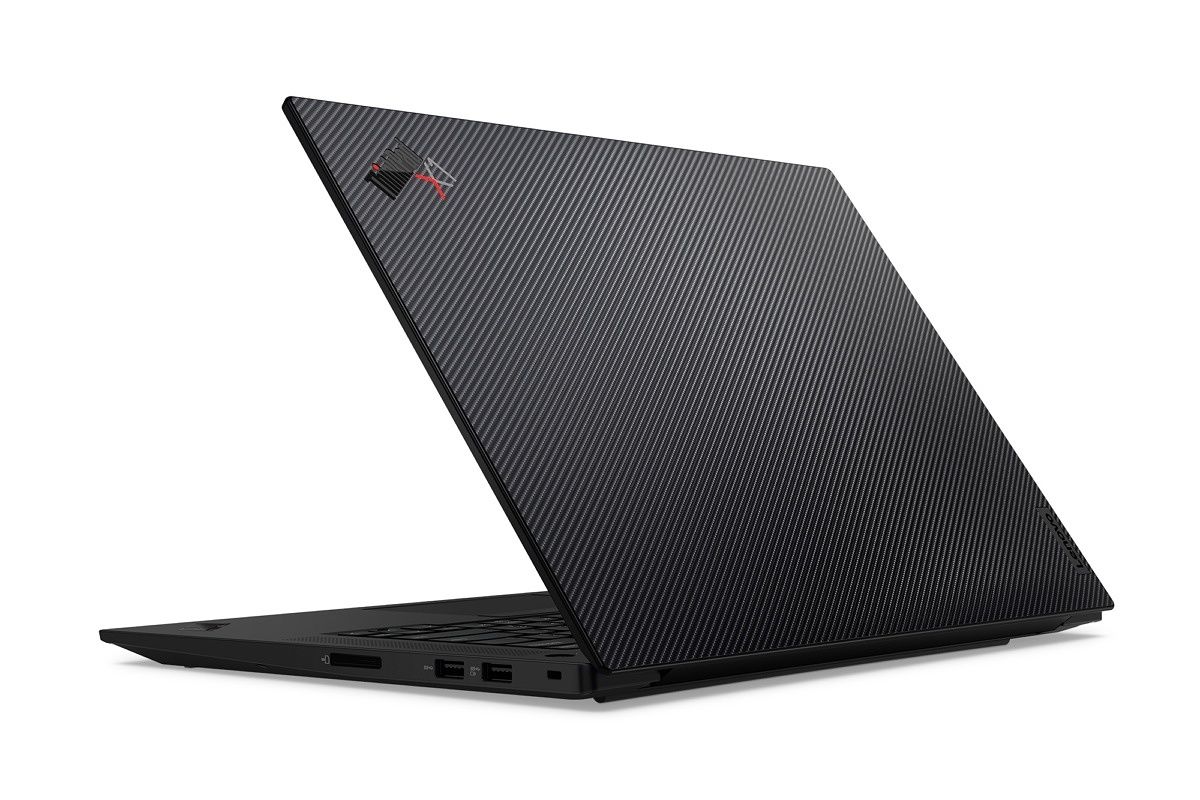
Lenovo ThinkPad X1 Extreme Gen 5
The Lenovo ThinkPad X1 Extreme Gen 5 is a powerful business laptop with Intel H-series processors and NVIDIA GeForce RTX graphics to handle demanding workloads and gaming.
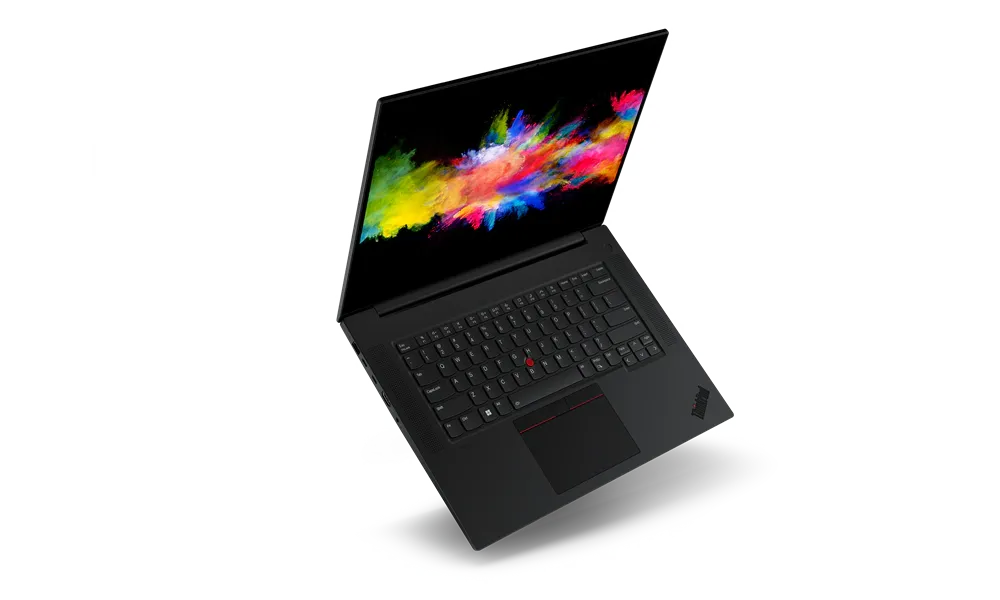
Lenovo ThinkPad P1
The Lenovo ThinkPad P1 is a mobile workstation with Intel H-series processors and Nvidia RTX GPUs with optional ECC memory for vital business workloads.

